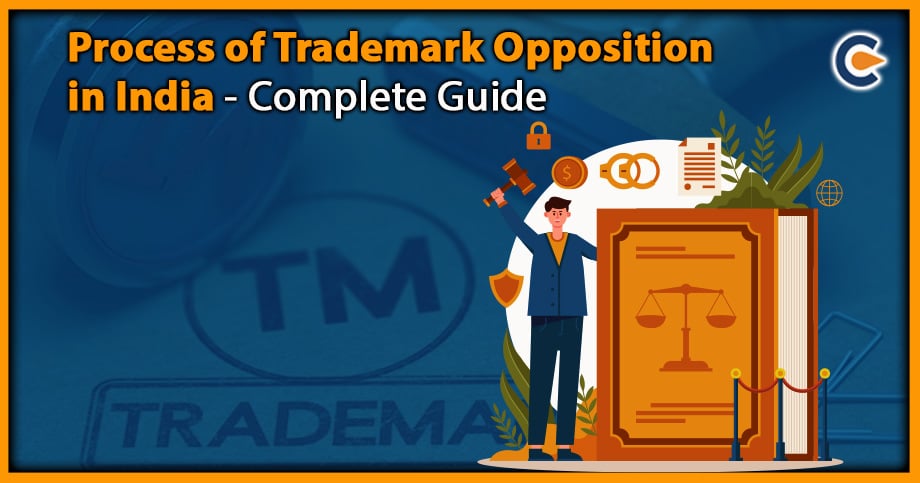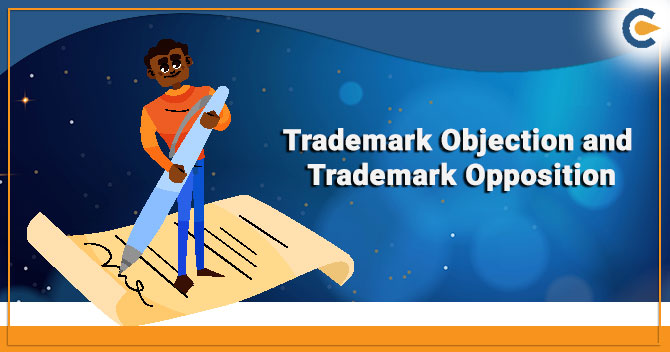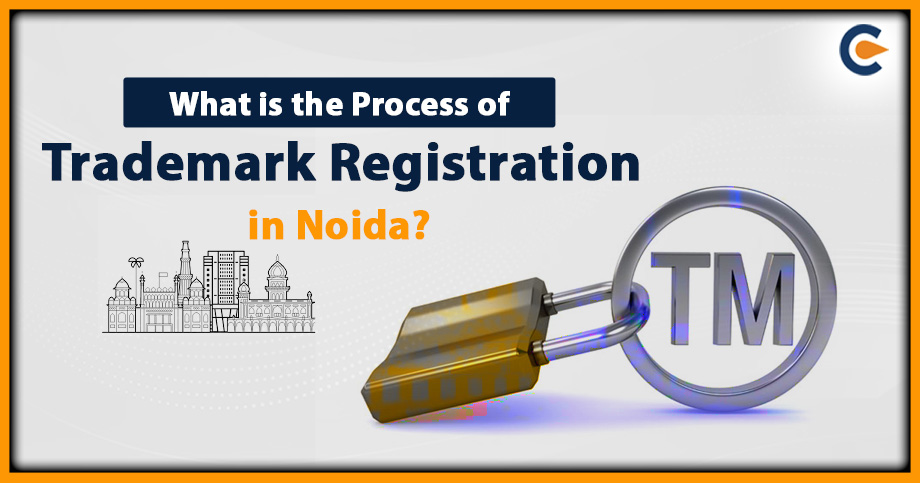A trademark aids in identifying various products and services by giving the company an identity that makes it stand out in the marketplace. Without security, it would lose its unique identity and be unable to build a name for itself in the market. A third party can use trademark resistance to prevent a person or business from registering a mark that is too similar to others or already in use. This is done to prevent customer or user misunderstandings about the business from which they are purchasing goods or services. It also ensures the uniqueness of already registered brands or well-known names, ensuring their brand value is maintained. Scroll down to check the detailed process of Trademark Opposition.
What is Trademark Opposition?
Before we discuss the process of Trademark Opposition, let’s understand the meaning of Trademark Opposition. Following the registrar’s approval of the trademark registration in India based on the uniqueness element. Anyone may challenge the published trademark within a timeframe of three months, which may be prolonged for an additional month (3+1), starting on the day it was first published. If the mark is disputed, an opposition process is opened. After both sides have had an opportunity to consider it, a choice is made. It would be decided whether to register the mark or reject it. There are no limitations on who can oppose. Anyone who believes that the trademark as published may cause confusion among consumers may file an objection, and the trademark applicant is responsible for upholding the brand.
Who Can Oppose A Trademark Application?
Opposition can be submitted by anyone who thinks the mark is violative or similar to any registered trademark. It is not necessary that the person filing the opposition must be the owner of a similar trademark. The opposition can be filed by any third party, including the buyer of the customer. When an objection is filed, the issue of the opponent’s credibility is not an issue. People have three months from the date that the TM was published in the Trademark Journal to challenge it; this time may be prolonged by a maximum of one additional month.
Why Is There A Need To File Trademark Opposition?
Through the TM-O form, the patent objection is submitted. The person who submits the opposition must file it with relevant documents. The opposition must send the necessary papers along with details about the application being opposed. Different information and documents are required depending on the basis for such opposition. Let us examine the essentials of opposing the trademark:
- Prior Authorisation
If the opposition is made on a trademark that has already been filed, the opponent must provide information about that property, including its status, application number, and priority date.
- Popular Marks
Any document that can serve as proof of an already existing well-known mark or a mark with a name in the market should be noted if the resistance is based on such a mark or marks, and it should also identify the country or countries where the previous mark is considered to be well-known. An alternative is to show documentation proving the mark has been filed or requested.
- Licensee
In cases where the opposition is submitted by a licensee who is not a registered user, the licensee’s name, location, and a statement that he has permission to submit the opposition may be provided.
- Foreigner
The opposing party’s name and delivery location in India are necessary when the opposing party is a foreigner without a place of business in India.
What Are The Grounds For Trademark Opposition?
A trademark can be opposed for a variety of causes. However, you can categorise them into two groups:
- Absolute
- Relative
- Absolute Grounds
Absolute reasons for opposition result from flagrant trademark law violations. They include the main factors:
- If the products and services do not have any such characteristic that sets them apart from others, the trademark registration will be turned down. The primary prerequisite for brand registration is distinctiveness.
- It will be challenged if a mark defines the calibre, nature, or any other attributes of the products and services the business provides. The mark must be distinctive and shall not reveal all information about the company’s goods and services. Offensive marks that are against public decency or can offend any group will be opposed. For instance, you cannot register the term “apple” for a fruit-related business but for a technology business.
- Moreover, your trademark application will be objected if you choose an offensive mark.
- Relative Grounds
If a comparable brand has already filed the same mark with the trademark officials, the similar proposed mark will be objected to. The company won’t be able to maintain its character if there are two trademarks that are confusingly identical. The application may submit a reply to the complaints outlining how its mark differs from the mark in contention and providing proof to back up this claim. The non-objection document signed by the proprietor of the competing mark may also be provided by the petitioner. A similar trademark cannot be filed in that case.
What Are The Documents Required During The Process Of Trademark Opposition?
You must submit the following records in India during the process of trademark opposition:
- The registration of a trademark
- Supporting documents to support your reply
- Information about your Trademark Attorney
Additionally, your opponent will need the following documents:
- Certificate of Trademark Registration (if he is the owner of the registered trademark)
- Information to back up the opposition
- Information about their brand lawyer
Process of Trademark Opposition in India
The following are followed in the process of Trademark Opposition:
- Trademark Opposition Notice
Within four months of the registration application being published in the trademark journal, anyone may submit a trademark opposition to the Registrar by submitting a notification in Form TM-O and paying applicable costs.
Details about the application (trademark registration application), the opposing party, and the reasons for resistance should all be included in the notice. Within three months of getting the opposition notice, the Registrar must deliver a copy of the notice of opposition to the petitioner (person who submitted the trademark registration application).
- Notice Of Trademark Opposition Counter-Statement
Within two months of getting a copy of the notice of opposition, the applicant must submit a Form TM-O counter-statement to the Registrar outlining their facts in response to the notice of opposition. Within two months of getting the counter-statement, the Registrar will serve a duplicate of it to the opposite party.
Let’s say the applicant does not submit a response within two months of getting the notice of objection. In that situation, the Registrar will assume that the trademark registration application has been abandoned and won’t proceed with the trademark registration. Therefore, it is essential to draft a proper reply and send it to the registrar within two months; otherwise, your application will be abandoned, and you will have to initiate the same process again to register your mark.
- Evidence Against The Opposition
After receiving a copy of the applicant’s counter-statement, the opposing party has less than two months to submit proof to the Registrar in support of their notification of objection. All copies of the evidence should also be sent to the applicant by the opposite party.
The petitioner should submit their supporting documentation for the trademark registration application within two months of getting the opposite party’s proof copy after receiving it. Both the Registrar and the opposing party must receive the applicant’s proof.
Following receipt of the applicant’s evidence documents, the opposite party has one month to submit additional evidence. The Registrar and the petitioner must receive additional proof from the opposing party.
- Decision After The Hearing
After both parties have submitted their evidence and the opposite party has submitted additional evidence, the Registrar will notify both parties of the first court date. The objection will be dropped, and the Registrar will register the trademark if the adverse party is absent on the hearing date.
The registration application will be deemed abandoned and rejected if the petitioner is absent on the hearing date. Both sides to the proceeding have filed written reasons, which the Registrar will consider.
The Registrar will decide whether to move forward with the trademark registration or refuse the trademark registration application after hearing from both parties and taking into account the proof they have provided. Both parties will receive written notice of the Registrar’s decision at the location they supplied.
What is the Time Limit of Trademark Opposition?
Anyone may challenge the trademark registration for three months following the trademark announcement in the Trade Marks Journal. (Which may extend to four months). In case of any opposition, it must be filled first in the trademark office to the registrar within the specified time. In case the result of the registrar is not satisfactory, then you can approach the court or the Appellate Board. (IPAB). If the registrar finds the trademark opposition accurate, he will reject your trademark application. If the copyright opposition filing is denied, the name will be registered.
How to File Trademark Opposition?
Provide complete information about the trademark registration that is the subject of the objection.
If an opposition is raised due to the similarity of the trademark, then the applicant’s name and application number of the already registered mark must be mentioned. Moreover, there must be a description of the products or services mentioned in the trademark application against which opposition must be mentioned in the counter-statement.
Mention information about the prior trademark or earlier claim that forms the basis of the opposition.
If the opposition is due to any already registered similar mark, you must provide the application or registration number of such trademark. An indication of the extent to which the nation or region the earlier mark is acknowledged to be well known is required if the opposition is founded on a renowned trademark.
Information about the opposition
If the owner of an earlier mark or earlier right files an objection, he must include his name, location, and a statement stating that he is the owner of the earlier mark or earlier right. Name, address, and the date of application for registration of the new proprietor received by the appropriate office are required if the successor files the opposition in title to the registered proprietor of a trademark who has not yet been registered as a new proprietor. The opposing party’s name and location for assistance in India if the opposing party does not have a place of business there.
Are Trademark Opposition and Objection Different?
The main difference between trademark opposition and trademark objection is that trademark objection is an initial process where the examiner raises objections to the trademark application. This objection is raised while the examiner checks the trademark application. Furthermore, when the examiner checks the application and the mark is published in the Trade Mark journal, the third party opposes the trademark application. An objection can be raised only by the examiner. In contrast, an opposition can be raised by any third party who thinks this mark is violative or similar to any already registered mark.
What Are The Reasons For Trademark Opposition In India?
- Submitting The Wrong Patent Application
The complaint procedures will be started if the registrar determines that the petitioner has submitted the wrong trademark form. The petitioner may file a modification request in the form TM-16 to address this problem.
- The Application Is Filed With An Incorrect Applicant Name
The name of the candidate is entered into the form TM-16 in accordance with the rules and regulations. Your trademark registration will be challenged if you accidentally entered the incorrect applicant’s name. You can use form TM-16 to submit a proposal to fix this problem.
- Not Submitting The TM-18 Form
The examiner will begin the objection procedure if the candidate has not submitted the TM-18 form or all necessary information. A signed power of attorney must also be included with the trademark registration if someone is filing it on behalf of the petitioner.
By applying, the applicant can ask for correction on the TM-18 form, which will override the complaint.
- The Application Was Submitted Under The Incorrect Trademark Class
There are 45 trademark classes, and you must review the catalogue of trademark classes before submitting an application for trademark registration. 36 to 45 are utility classes, and classes 1 to 35 are for products. Depending on the type of your company, you must choose the appropriate trademark class. Moreover, the trademark objection procedure will begin if you register your trademark under the incorrect class. You are required to send your proposal to the examiner in order to correct this error.
- Incorrect Address
Every company that applies for copyright must include the correct location of the place where the business is located. Your application may be challenged if the business gave the wrong location and made no note of it in the TM-16 form. You have the choice of sending a form TM-16 for a change request.
- A Generalised Summary Of The Products And Services
Sometimes, the candidate gives a lengthy and ambiguous explanation of the products and services they offer. The objection procedure will be started if the evaluator feels that the explanation is insufficient and inappropriate. Form TM-16 must be filed in order to seek a change to the description of products and services.
- The Presence Of Related Brands
Your registration will be rejected if the applied mark is identical to or confusingly close to an existing registered trademark. The reviewer won’t review your application because similar trademarks cannot be registered. If identical trademarks are filed, the business will lose its distinctive identity, and people will become perplexed about the brand identification of all businesses. Therefore, when choosing a symbol, you must ensure that it is original and hasn’t been used before.
- Employing A Symbol That Suggests A Connection To A Government Entity
You must avoid using any words or symbols that could mislead people into believing your business is affiliated with a government agency. For instance, you cannot call your business regal government Pvt. Ltd. because the term “government” implies that your business is connected to a government agency and may cause confusion. The evaluator will challenge such a score.
- Using Offensive Mark
If your brand employs any language that is impermissible or insulting, it will be challenged. Such a symbol cannot be registered as a trademark because it violates public morals and will have a harmful effect on people.
What Are The Repercussions Of Not Submitting A Response?
To avoid making errors during the registration process, you must make sure to seek the counsel of a law professional when submitting the trademark application. If you employ a trademark lawyer to file a registration application, there are also lesser possibilities that the application will be opposed.
Responding to the opposition is a crucial stage in the trademark registration process, as many trademark applications receive them. You must also be conscious that everything in this process is time-limited, so you must submit your reaction to opposition within a specific window of time. Your registration will be cancelled if you don’t respond on time.
After that, you have only two choices: either submit a new application using the same process or request an extension of time with a valid justification.
Conclusion
After the Trademark Registrar publishes the application for trademark registration in the Trademark Journal, any individual or third party may submit a Trademark Opposition to the trademark registration application within four months of publication. If an opposition has been submitted, the online state of your trademark application will say “Opposed”. A trademark investigation will be conducted if your application for registration is accepted, after which it will be published online in the trademark journal. Making the work known to the public and providing everyone with a chance to oppose to the application are the primary objectives of such publications. Only if they believe the filing harmed them should they submit an online trademark objection. To file for Trademark Opposition in India, you must seek expert guidance by contacting Corpbiz.











